Learn how you can animate charts in PowerPoint 2011 for Mac. You can animate the entire chart or animate chart categories or series sequentially.
Author: Geetesh Bajaj
Product/Version: PowerPoint 2011 for Mac
OS: Mac OS X
In this series on using animation in PowerPoint, we have already explored how you can apply animation to any slide object, and then tweak the animation speed and animation events. Charts can also be animated in a similar way. However PowerPoint provides some extra animation options that are applicable only to charts. For example, you can animate series and categories individually as required, and you can also decide whether you want to animate the plot area or not.
Like charts, there are extra animation options available for bulleted text and SmartArt.
In this tutorial, you'll learn how to apply animation to charts, and also explore the various chart animation options in PowerPoint 2011 for Mac.
So, why would you want to animate a chart? Here are some reasons:
Those were just the most common reasons why you would want to animate a chart. There are plenty of other reasons you will discover for yourself! Also remember that animation is movement, and that's something that will draw attention. For that reason, only animate charts that you want to highlight.
Scroll down to the bottom of this page to see a sample presentation showing animated charts.
Follow these steps to apply animation to a chart. In this tutorial, we'll use a column chart, but the concepts remain the same with other chart types:
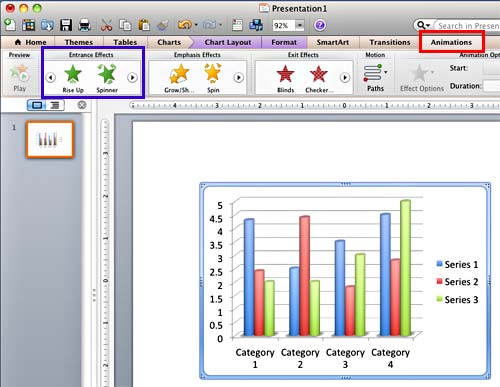
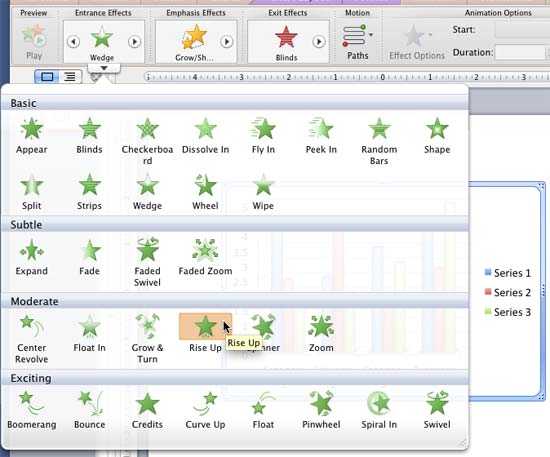
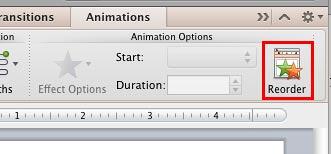
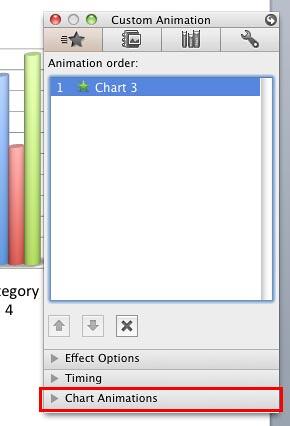
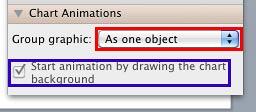

Choose any of the available options that are explained below:
As One Object: Animated all at once.
By Series: All Series are animated one by one.
By Category: All categories are animated one by one.
By Element in Series: All individual series elements are animated sequentially.
By Element in Category: All individual category elements are animated sequentially.
There are no built-in options to animate legends, data labels, or axes separately in PowerPoint. You can only animate categories and series, and the plot area individually.
Sample Presentation
Click below to view on YouTube
See Also:
13 04 03 - Animate Slide Objects: Animate Charts in PowerPoint (Glossary Page)
Animate Charts in PowerPoint 2013 for Windows
Animate Charts in PowerPoint 2010 for Windows
Animate Charts in PowerPoint 2007 for Windows
You May Also Like: How to Create Value for the Audience When Chairing a Panel Discussion | Eyes PowerPoint Templates


Microsoft and the Office logo are trademarks or registered trademarks of Microsoft Corporation in the United States and/or other countries.